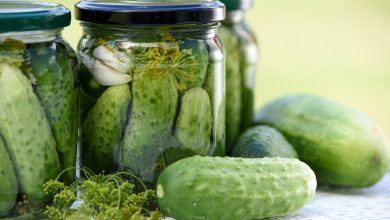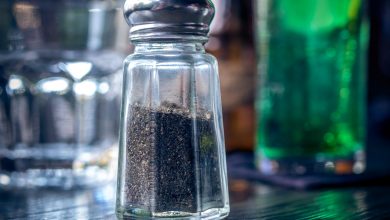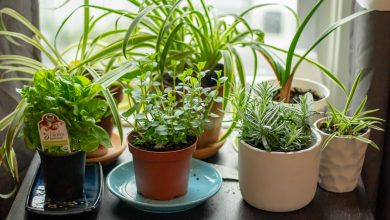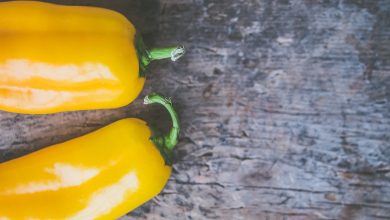How to Grow Perfect Strawberries this Season
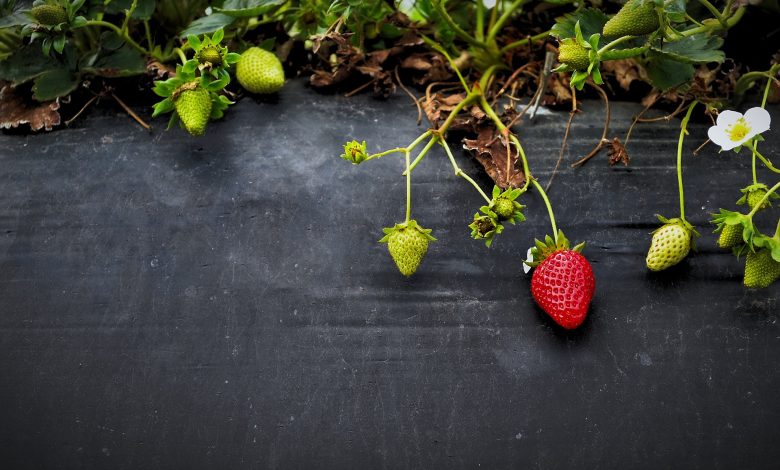
Strawberries are the perfect treat on those hot summer days, but they are so much more than just a tasty snack. These delicious berries offer a plethora of nutritional benefits to keep you healthy all year long. They have a ton of antioxidants, such as kaempferol, quercetin, anthocyanins, and ellagic acid. Similarly, strawberries are packed with fiber, vitamin C, and potassium. Studies have shown that these minerals and vitamins can help in preventing diabetes, constipation, blood pressure, and heart disease.
If you love strawberries but are tired of spending big bucks on them at the grocery store, why not put your green thumb to use and grow a field of berries?
The following guide will walk you through all the stages of creating your berry garden. This guide will go through proper planting conditions, preparing your soil, planting your berries, maintaining your crops, and of course, the best techniques for harvesting. Overall, you will have a handy guide for growing strawberries to absolute perfection.
The Ideal Planting Conditions

Temperature
The best temperature to grow strawberries ranges from 60 to 80 degrees Fahrenheit (16 to 27 degrees Celsius). While strawberries thrive in these cooler temperatures, you have to watch the mercury because, as you get outside of this range, it becomes stifling for their growth. As such, growing strawberries in Death Valley may be challenging.
Here are a few tips to help protect your newly planted strawberries from the harsh weather:
- If the thermometer drops below freezing, cover your strawberries. Your berries can handle a little bit of frost, but prolonged exposure to the cold will end their life before it truly begins.
- If you have opted to plant in-ground, you may cover the bed or beds with a portable plastic tunnel. You are setting this sheet of clear plastic over a constructed mesh structure or a half hoops frame. Add a blanket or tarp over the frame for those intolerable freezing nights.
- On those warmer days, you can open the ends of the tunnel to give the strawberries a little light and to increase the ventilation. As the days grow longer and the temperature becomes warm, the flowering stage will begin. It will bear fruit until the temperature reaches 80 degrees Fahrenheit (27 degrees Celsius).
- In mid to late winter and spring, put some straw around the plants. The straw is great for air circulation and will keep the fruits clean.
- Those hot summer days will dry or burn your strawberries. Luckily, you can simply replace the plastic tunnel with a 65 percent shade cloth. Laying this over the hoop frame will offer your berries the protection they need from the hot summer sun.
Location And Position
Planting strawberries in late summer and fall is ideal, as the days are cooling, and the soil is still warm. While planting your berries, it is essential to place the thickened stem or crown at an appropriate level. It should not be too high or too low. If you set the head too high, it will dry out, but if you place it too small, your berries will rot. The trick is to plant it in just the right spot – right in the middle.
Timing
As with other crops, the soil should be well-drained and fertile. As mentioned earlier, you will want to start planting in late summer or early fall, as it is the coolest time of year. The soil around the strawberries should be moist, but be careful not to soak it.
Choosing the Best Variety For Your Needs

There are three main types of strawberries:
June-bearing
June-bearing bears the biggest fruit out of the three. However, it is only able to produce fruits for two to three weeks around June, thus “June-bearing.” If large fruits sound great, but you prefer to munch on strawberries throughout the season, you can opt for the everbearing or day-neutral varieties instead.
Everbearing
Everbearing, contrary to its name, does not produce fruits perpetually. They produce fruits in spring and late summer or fall, for a total of two harvests per year. But with the utmost care, you may be able to eke out a third harvest.
The first harvest has the most substantial yield, fewer in the second one, and the smallest yield in its last. It also produces fewer runners, as it spent most of its energy on delivering a more substantial return of fruit.
Day-Neutral
Day-neutral stands out on its own. It promises a good yield in its first year. Whenever the temperature ranges from 35 to 85 degrees, it starts to flower and set. It generally produces fruit around October; however, unlike the June-bearing and Everbearing varieties, the fruits are smaller, usually ranging from small to medium size.
So now you need to figure out what type of harvest you wish to have.
Do you prefer large fruits but with only one summer harvest, or are you happy with smaller berries but with multiple harvests? There is no wrong answer here, as it is all a matter of preference. Don’t forget; you can plant more than one variety and enjoy strawberries all season long.

The Method For Growing Perfect Strawberries
You have purchased your preferred strawberry variety and are wondering what is next on your to-do list. Well, now you need to determine the best planting method for your tasty berries.
There are two well-known methods for growing strawberries: the matted row and the hill system. The matted row system is ideal for June-bearing berries, while everbearing and day-neutral thrive in the hill system.
The Matted Row System
The matted row system is a method for June-bearing varieties, as they are notorious for sending out runners. This setup allows each plant to bear daughters who will take over during the next spring season. If you have experience planting biennials, then this system will be a walk in the park. Even though strawberries are perennial, you will give them a biennial treatment in a matted row system setup. You need to plant each spring to harvest the following summer. The plants should be placed 24 inches from each other. One bed should be four feet apart from another bed. This way, runners will grow and spread freely and form a matted row around 24 inches wide; hence, the name of this method.
Using the bed for another year means the development of lots of new plants. While lots of new plants sound exciting, the yield will be less due to overcrowding.
The Hill System
If you have decided to choose either everbearing or day-neutral varieties, the hill system, also known as the mound system, is the ideal method. You will be required to create hills or mounds in this method, and it is great for small gardening spaces.
The hill or mound should be 8 inches high and 24 inches across. Each bed should consist of three rows, and the plants should be 12 to 15 inches apart from each other. Once you see the runners form, cut them off right away. Cutting the runners will ensure that your plants are focused on producing more fruit instead of additional plants.
Plants continue to bear fruits for the next six years (and even more) in a hill system.
As you can see, the method you employ all depends on the strawberry variety that you are growing. Now that the variety is selected and you know which method you are going to use, you need to prepare your soil.
Preparing Your Soil
Before planting, make sure to check if the soil is free of weeds, diseases, and grubs. Once the coast is clear, you can add two to three inches of manure, aged-straw, compost, or peat. All of these will help in retaining moisture, which is crucial for successfully growing strawberries. Improve your soil quality by adding organic (or commercial) fertilizers.
A soil test kit will come in handy, as you need to check the pH of your planting area. Strawberry plants typically prefer slightly acidic soil, so the pH should be between 5.0 and 7.0. Similarly, a pH of 5.8 to 6.2 is the sweet spot for maximum production and yield.
If the pH of your soil doesn’t fall line, there are a few things you can do to adjust accordingly. If the soil is too acidic, then adding lime or wood ash to your soil may neutralize the acidity. On the other hand, if you need to increase the acidity, then it may be time to add some manure or compost to the planting area. For best results, make sure the added lime and manure are tilled thoroughly within the soil.
Planting
First, prepare the plants you will be planting. It is essential to check your strawberries and make sure they are of high quality. Poor quality seeds in even the best soil will not grow.So what are you looking for when inspecting your berries?
The best strawberry crown to plant is supposed to be large. If the roots are light-colored, it means it’s healthy. If it is not large enough yet, you can wrap them in wet paper towels. Place them in a bag and store them in your refrigerator.
Next, check today’s forecast. The best day to dig planting holes is during an overcast day or late in the afternoon. The hole that you dig should be large enough to accommodate the future growth of the strawberry plant. The plant should not be too deep or too shallow. Too shallow will cause premature drying, while planting too deep will damage the strawberries during growth.
One technique for an accurate measurement is by creating a little hill at the bottom of the hole. The crown should be at the same level as the topsoil, while the roots should be around the sides of the little hill. Once the top is set correctly, start filling in the hole. You can begin watering after compacting the soil around the roots.
Maintaining

Mulching
An ideal mulch for strawberries will be composed of straw, shredded leaves, compost, and pine needles. Remember, strawberries love to grow in slightly acidic soil, which makes pine needles a great composting ingredient as they are somewhat acidic.
Mulching will maintain the soil temperature at a much cooler level, making it an ideal growing environment for your strawberries.
Watering
Watering is essential because strawberries bloom best when planted in a moist environment. As a gardener, you have to create a conducive environment for them, which means increasing the quality of the soil the best way you can. While the fruits are forming, regular watering needs to be maintained until you harvest your delicious fruit.
In fall and early winter, you have to water to a depth of 12 inches. Never water your strawberry plants two days in a row, as the soil needs time to dry out over a few days.
Compost and Fertilizer
Matured compost will be better than commercial fertilizer. If you prefer to use commercial fertilizer, ensure that it is high in potassium and phosphorus. Make sure you always read the fertilizer instructions carefully as it is easy to burn your strawberries.
After your first harvest for everbearing and day-neutral varieties, you can apply fertilizer. For June-bearing strawberries, it is only acceptable to use fertilizer during the renovation period. You have to ensure that the soil is dry before fertilizing to prevent phytotoxicity. You should never add fertilizer in a fruiting year. While nitrogen is good, too much of it will give you weak strawberries.
In the matted row method, you can train the runners of June-bearing strawberries. It will eventually know which pattern you would like to follow. Also, the ideal time to sprinkle fertilizer would be during its renovation time. Water down the compost immediately to ensure that the growing roots will absorb it.
For overbearing and day-neutral varieties in the hill setup, make sure to remove buds and runners. The ideal removal is up until July 1 of its first year.
Having too much fertilizer can lead to excessive leaf growth, which will result in fewer flowers. While adding phosphate-rich bone meal and nitrogen-rich blood meal is good, the most experienced gardeners recommend cutting back on fertilizers for strawberry plants. In this case, less is better.
Protecting Your Strawberries
Try to prevent birds from snacking on your delicious berries by installing netting around your garden. Setting up bird feeders on another part of your property (away from your strawberries) is a great way to keep both you and the birds happy.
The other pest that you need to watch out for are slugs. These slippery pests love chowing down on strawberry plants. Using a copper ribbon around your garden should help prevent slugs from getting in and wreaking havoc on all of your hard work.

Harvesting
Finally, your strawberries are ready to harvest after four or five months of growth. The best time to pick your berries is when it is blooming red. The goal is to choose the strawberries before they are soft and mushy. It is better to pluck the berries early, as they will continue to ripen even once they are off the plant. The best way to know if it is ready for picking? Take a bite!
To correctly pick your berry, position your thumb and forefinger just above the stem directly above the fruit. Try to get it as close as possible. Ripe strawberries can be fragile, so make sure you are gentle when harvesting. To maximize your yield, you have to pick as often as you can. Every other day is the best.
Preserving
Strawberries maintain an image of having more than what meets the eye. From the time that it is still green, to its pre-maturity days, until the day it is finally deliciously red, it surely offers a lot.
Most of us prefer red strawberries for consumption, but green berries are also a hit. While the majority are delightfully munching on the red ones, chefs all over the world are adding green berries to their cakes and salads. Overripe berries don’t get to waste either, as you can make jams, dry them, or use them in jellies. Strawberries are one of the more versatile fruits.
To store the fruits longer, only wash them right before you eat them. As much as possible, keep them cold and dry. Before refrigerating, you may put them in a tray with paper towels and cover with plastic wrap.

While it may seem that preparing, planting, growing, and harvesting strawberries is a ton of work, it is worth it. Berries are one of the best crops you can grow in your garden. Its color and smell will create an environment that you will want to spend time around. And since strawberries are also under the perennial category, it means you can continuously reap the deliciousness for years to come.
Now, it is up to you to find the type of strawberries that is perfect for you to grow and harvest. Mixing and matching is a great idea, but it can lead to a little more maintenance work. The payoff, though, will be having berries throughout the entire growing season. Let’s face it, you can never have enough berries, so this is a pretty good option.
